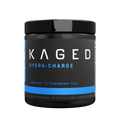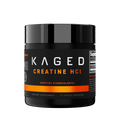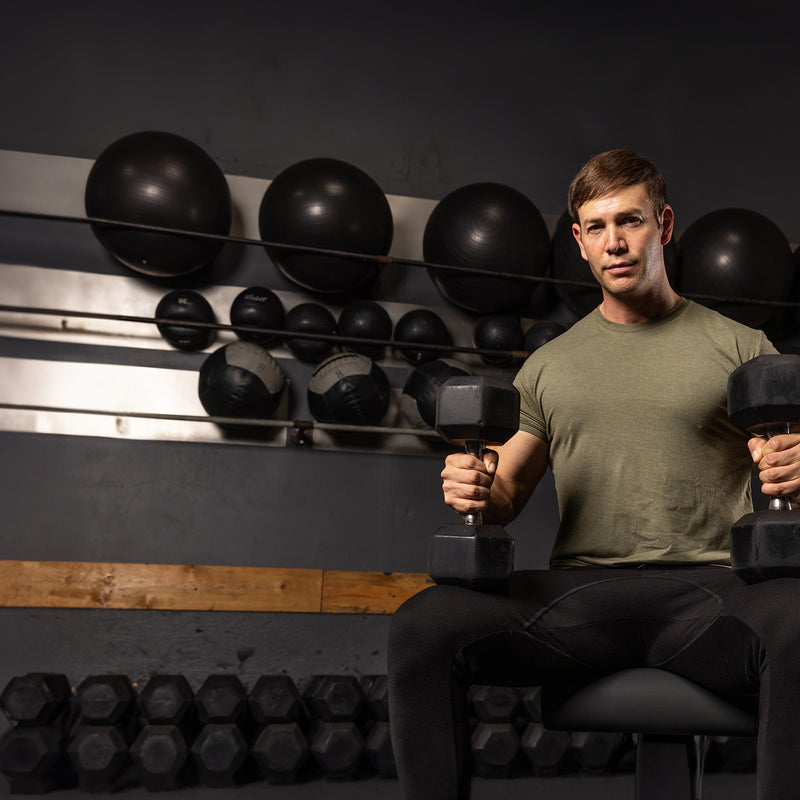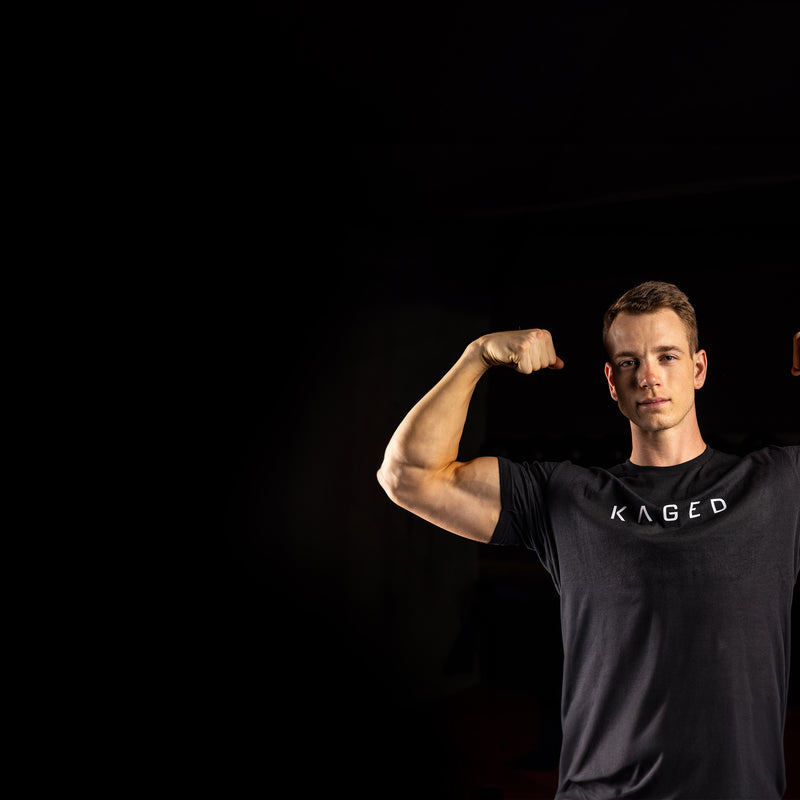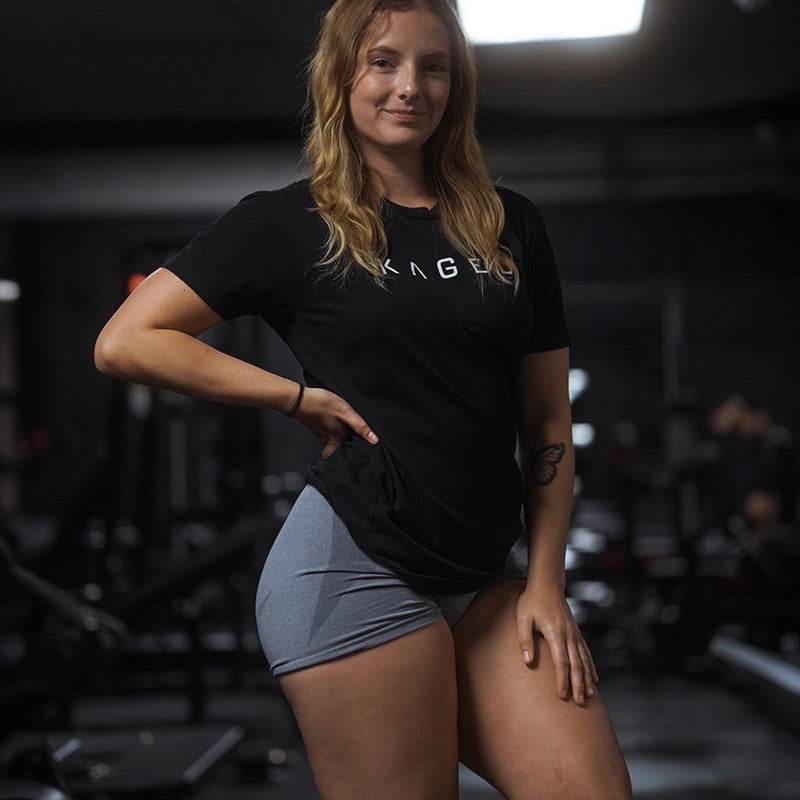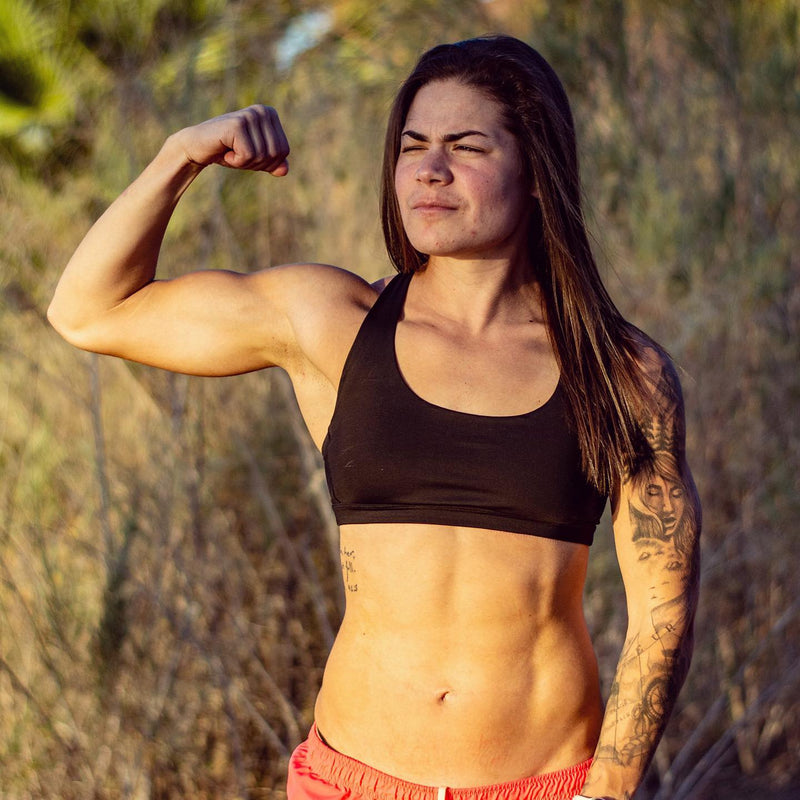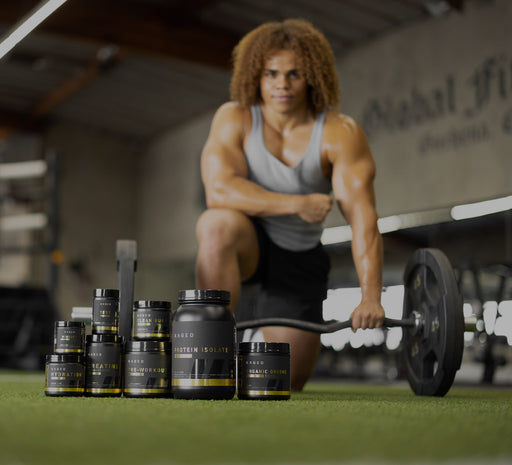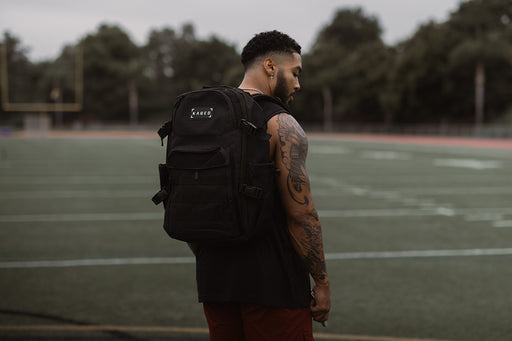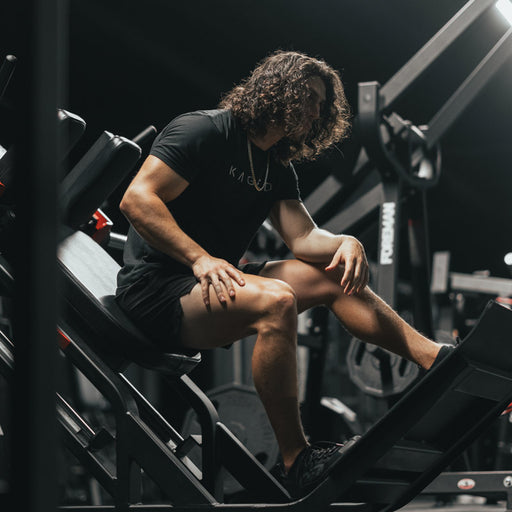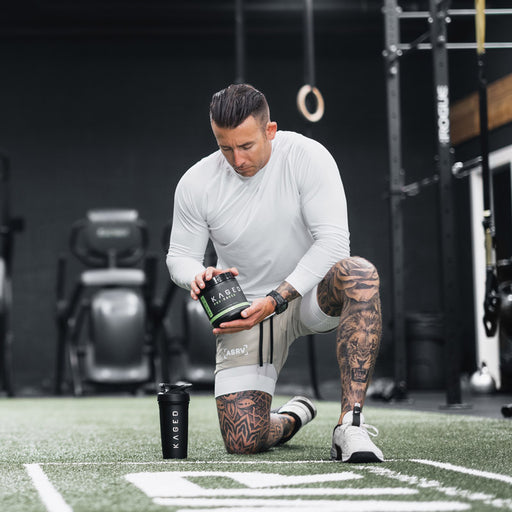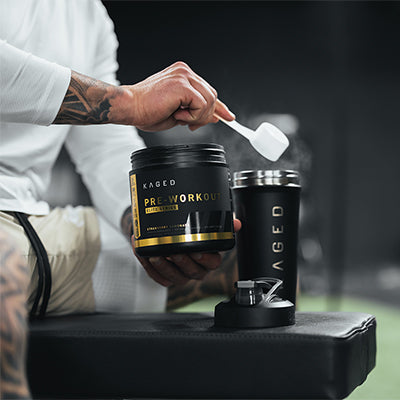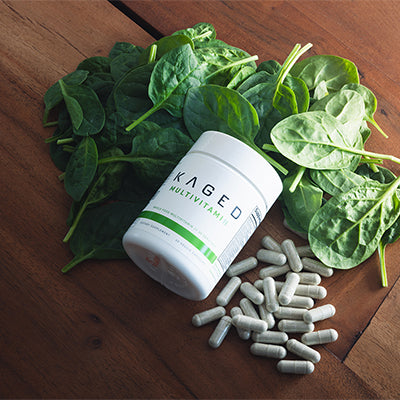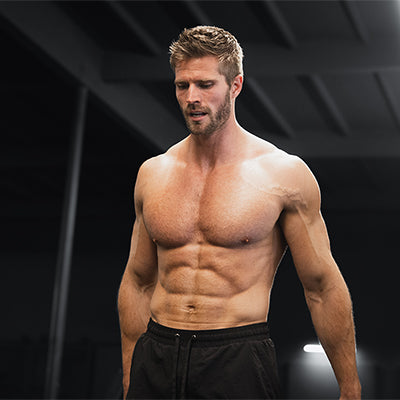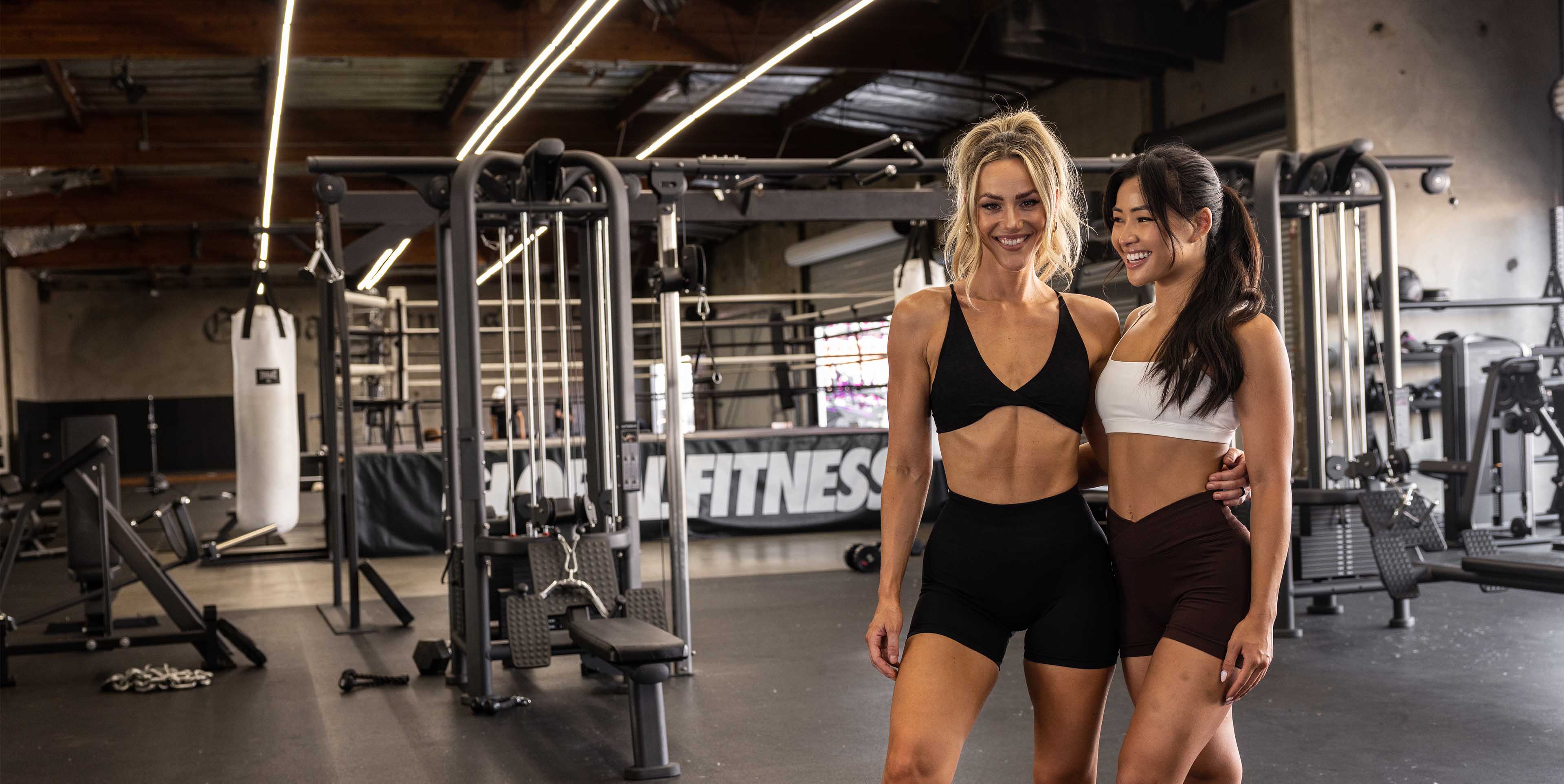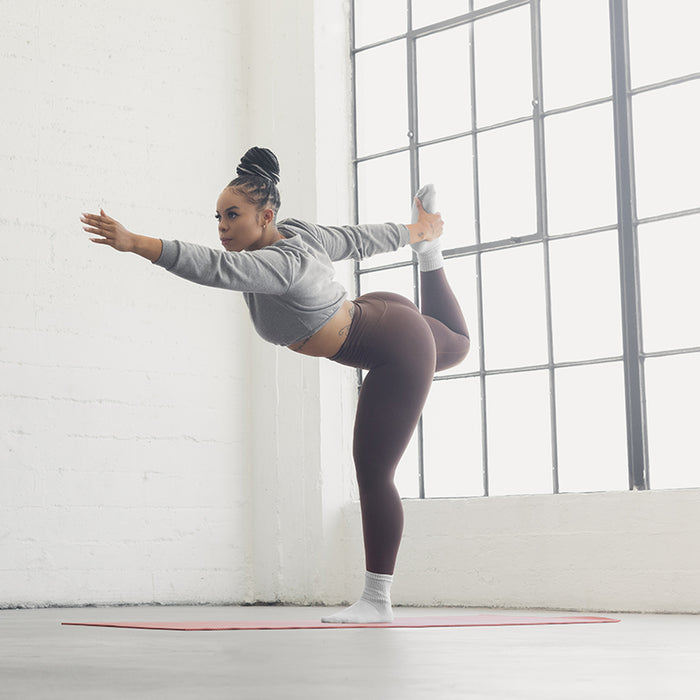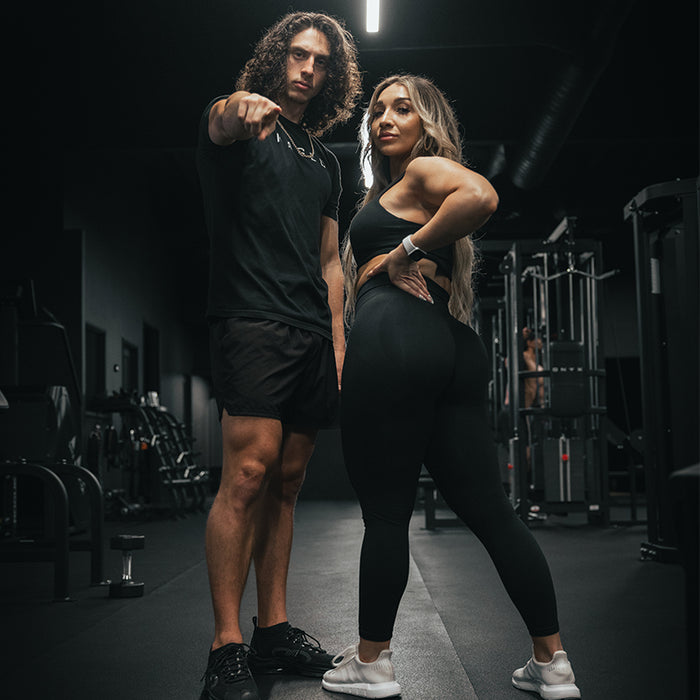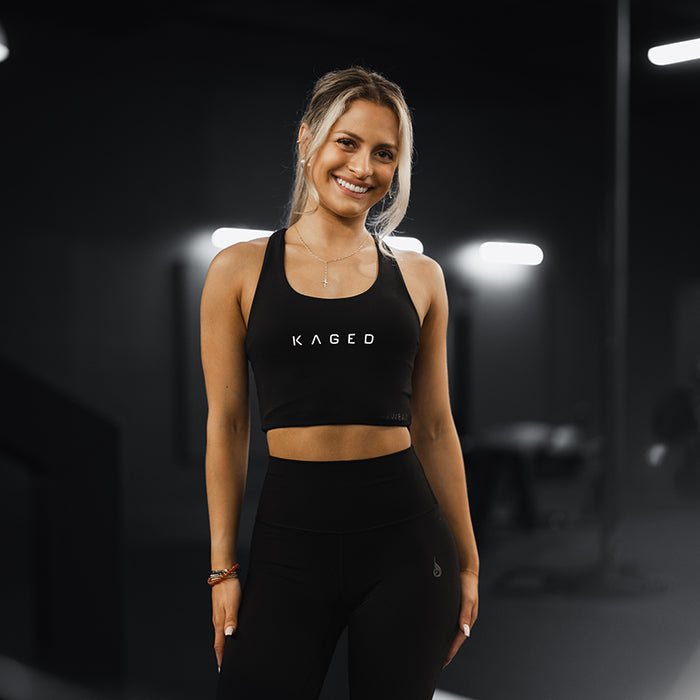Front squats are one of the best exercises for building quads, glutes, and improving athletic performance.
While they’re often looked at as a second-tier exercise behind its cousin, the back squat, the truth is front squats have an array of benefits that no other leg exercises can claim.
What is a Front Squat
A front squat is when you perform a squat with the barbell resting in front of you on your shoulders. There are two popular grips to the front squat: the “clean grip” and the “cross grip.”
Each has their own advantages. If you’ve practiced Olympic Lifting before, you’ll recognize the clean grip because it's the position you hold at the top of a clean. This has its own advantages, which we’ll talk about, but the downside is that you need ample wrist and shoulder mobility.
With the cross grip, you eliminate the need for a lot of wrist and shoulder mobility. This variation is easier if you’ve never done a front squat.
The downside is that it will have less transfer to exercises like cleans, and won’t improve your shoulder and wrist range of motion.
Why You Should Include Front Squats In Your Program
Regardless of the grip you choose, there are a ton of reasons to include front squats in your program. For starters, too many people neglect their lower body, which is our base for everything we do.
Even when beginning lower body training, you might rush into back squats.
While a great exercise when done correctly, it’s challenging for beginners, requires a ton of shoulder external rotation, and puts the load directly on your spine.
Front Squats have a lot of advantages and generally are going to be easier to do safely than back squats, especially for beginners.
Here are 6 reasons why you should include front squats in your program.
1) More Quad Emphasis, Improved Quad Strength
Compared to other squat variations, front squats place more emphasis on the quad muscles. This is because in a front squat, you have to keep your torso upright in order to keep the weight up. This shifts the angles of the ankles, knees, and hips. The result is more quad activation.
Front squats will still work the hamstrings and glutes, however there’s more quad emphasis.
If you tend to feel a lot of glute and hamstring while you squat, and not as much quad, then this is a great choice to balance your lower body.
In other words, if you’re the type of person who the day after squatting has sore glutes but not sore quads, give the front squat a try.
2) Support Your Posture
Improving our posture in turn will have an array of positive downstream effects, from reduced risk of many injuries, to better performance.
Front squats, as we’ll talk about more, requires the use of our abdominal muscles to keep us upright. These muscles stabilize our entire body, and can even help shift the pelvis from an anterior tilt, back to a neutral position.
It will also require you to keep your shoulders neutral, otherwise you’ll have a hard time holding the barbell.
As a consequence, when you front squat with your core engaged and your shoulders back, it will support a healthy posture.
This exercise requires the most upright posture of all the squat variations so as you start adding plate weight to the body while sustaining that posture, you can imagine what this is going to do for your postural muscles.
3) Increased Flexibility, Mobility, and Range of Motion

The next benefit of front squats is improved flexibility. There’s no cheating your way out of front squats.
To lower down in a front squat, you need adequate hip mobility, ankle mobility, and knee mobility. Because the angle is more upright than a back squat, you’ll need more of all of these in order to get deep into a front squat.
If you choose a clean grip, you’ll also improve the range of motion in your wrists and shoulders.
4) Reduced Risk of Lower Back Pain
One common complaint of back squatting, especially heavy back squatting, is low back pain. In a back squat, all the weight is loaded on the spinal column and even a slight forward lean can translate to lower back pain over time.
Further, many people when they back squat sacrifice the position of their spine when they reach back, since they lack the shoulder movement to do so without arching their spine.
As you can imagine, if you reach your arms behind you like a back squat, your lower spine might arch. When you go to back squat, you’ll then use your lower back more, which can lead to lower back pain. This is compounded by the fact that the weight is loaded directly over the spine.
The great thing about front squats is that since the weight is placed on the front of the body, much of the stress is taken off the lower back joints.
This can help you stay pain-free, reducing your risk of being sidelined with an injury. Back pain is a debilitating injury and once you have it, it can be hard to get rid of.
Since it can improve your posture and strengthen your abs, it will also support healthy positions where lower back pain is less likely on all exercises.
Stay safe by alternating back squats with front squats from time to time to give your lower back a break. If back squats hurt your lower back, then just ditch them altogether.
5) Strengthens Your Abdominal Muscles
When you think of training the ab muscles, you probably think of crunches. However, our abdominal muscles work in a wide range of exercises because they play a key role in stabilizing our whole body.
If we could cut the abdominal muscles out of your body and have you do a front squat, you would fall on your face.
Even though they don’t move in a front squat like they do during a crunch, the abs are contracting when you front squat to keep you upright the whole time. This is called an isometric contraction, and it’s one of the most potent ways to train the abs. It’s similar to a plank in this way. Except, it’s much more complexity because of the movement of the front squat and the added load.
With a back squat, because the weight is behind you, you don’t activate the abdominal muscles as much as a front squat. If you struggle with posture, back pain, and weak abdominals, consider switching to front squats because of how they strengthen your core.
6) Transfer to Other Exercises and Sports
One final reason you’ll want to add front squats to your workout plan is because its benefits transfer to so many other things. As you get stronger on your front squat, you’ll notice that you also get stronger on your back squat, as well as exercises like lunges.

You may even notice you’ll perform better on abdominal exercises like planks.
Front squat skills also transfer well to any Olympic weightlifting exercises such as the clean and jerk or the snatch. Because these exercises all have a front squat movement pattern incorporated into them, the stronger your front squats get, the more weight you’ll usually be able to lift during these exercises.
As for athletes, the quad-dominant nature of front squats mimics athletics. The strength you gain in front squats can equal more power and speed on the field, track, or court.
Who Are Front Squats For?
For everybody, really. They’re great for beginners to learn how to squat. They’re great for advanced trainees looking to mix it up from back squats and hit the leg muscles at different angles.
For Olympic Lifters, they’re absolutely essential to building strength. For regular athletes, they’re often a safer alternative to back squats for building leg strength, since it puts less stress on the lower back.
If you usually squat twice per week, you might choose to devote one session to back squats and one to front squats. Or, alternate between two to three weeks of back squatting followed by two to three weeks of front squatting.
If you’re a total beginner, we recommend doing goblet squats for 2-4 weeks, and then going to front squats.
Looking For a Great Program?
We have an array of free training programs for any goal. From fat loss, to muscle gain, to performance enhancement, check out our free training programs.
Improve Your Squats with The Right Supplements
Finally, we know that supplements can be an important piece of the puzzle. They can improve your energy, stamina, focus, power, and more.
At Kaged, we formulate science-backed supplements to help you dominate in the gym and life.

SHOP OUR BEST SELLERS
Front Squat FAQ
What Muscles Does the Front Squat Work?
Like any other squat, fronts squats will train most of the lower body. They’ll target the quads, glutes, and hamstrings. They are more quad-dominant than back squats.
Unlike many other squats, because it’s front-loaded, the front squat also will train your abs.
Can I Do Front Squats With A Smith Machine?
You can, but you’ll lose out on some of the benefits. In particular, you won’t have to stabilize your core to keep you upright. If you’re struggling with barbell front squats, then goblet squats are a great exercise to try first.
Do I Have to Squat to Build Leg Strength?
No. Lunges, split squats, leg presses, and other exercises can also build your legs. For more, check out this Squat Free Leg Workout.
